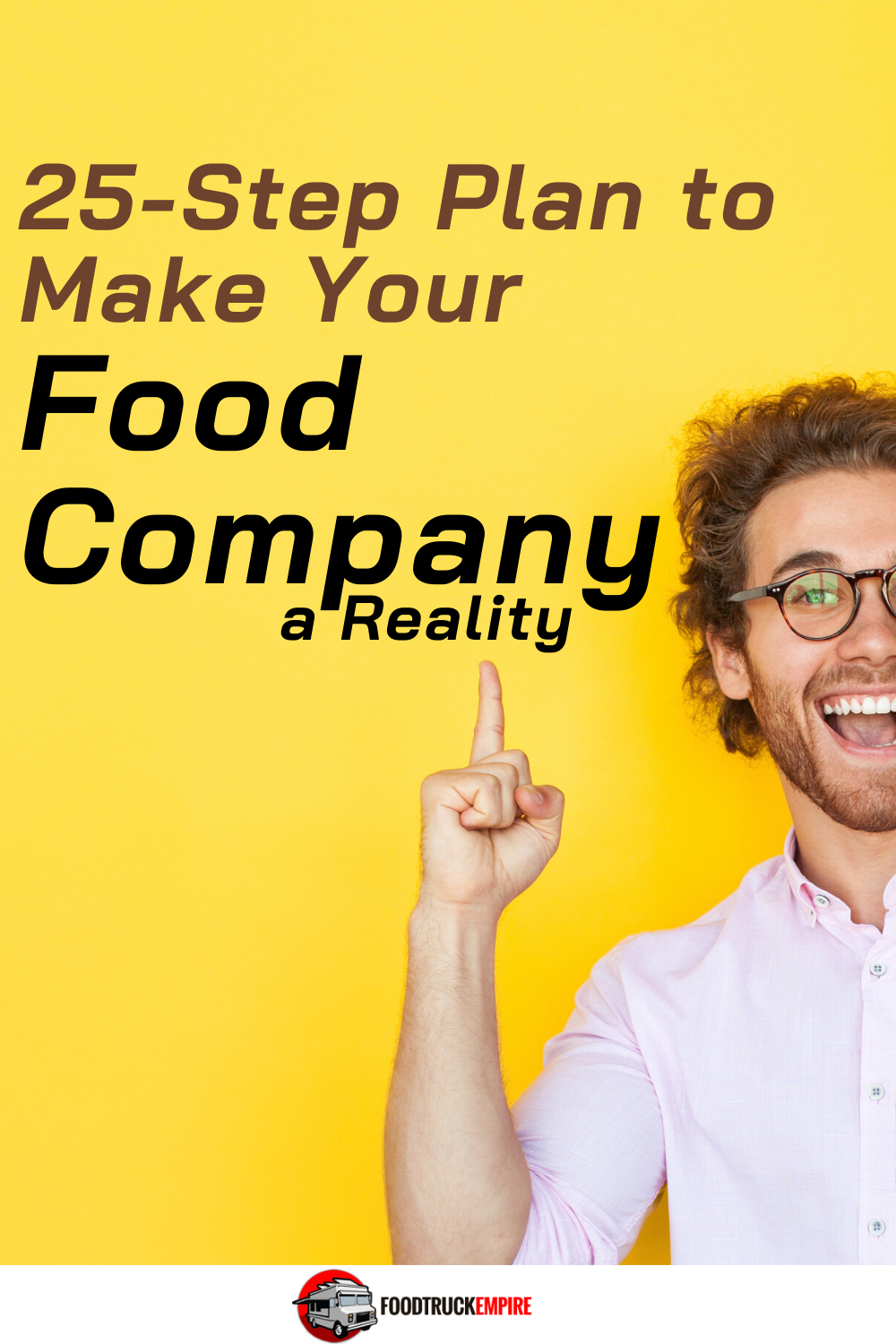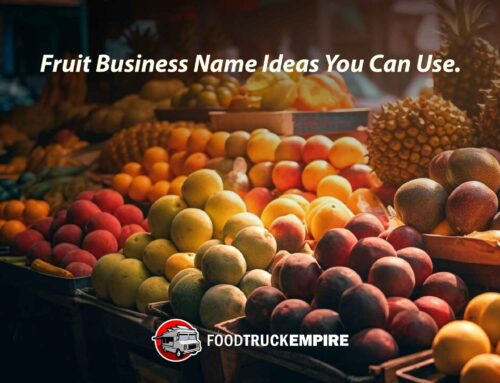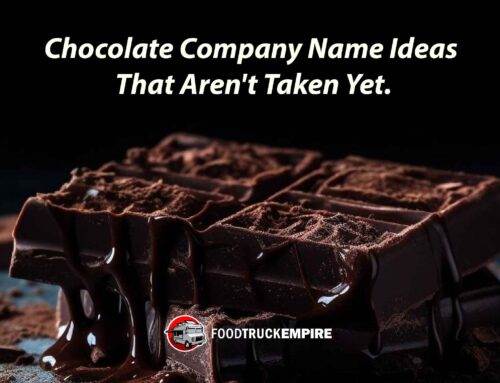Podcast: Play in new window | Download | Embed
Subscribe: RSS

Your 25 Step Plan to Starting a Food Business.
A lot of wanna-be food entrepreneurs sit at their kitchen table with their head in their hands wondering what to do next. Where do they start? What about finding kitchen space? Recipe approval? A logo? Man, there’s a lot.
If you’re stuck with starting your food business, I’ve created a 25-step fool-proof guide that walks you through everything you need to do before your first sale. The list is a mix of marketing, production, operations, and general food business to-do’s. And it’s in no particular order. I hope you find value in it — if you do, let me know.
Let’s hop right into it:
1. Select your company name
This one’s quick – grab some friend’s and family and start putting names down on a piece of paper. But, don’t settle. Think about your company name.
You don’t want it to be close to anyone else’s, hard to say, or limiting (yes, I realize I did 2 out of 3, but I didn’t know better back then!). Plus, look on GoDaddy to see if your domain name is available and snatch it up (we’ll talk about website later).
Here are tools to help you with naming:
- Wordoid (this is super-fun)
- NameRobot
- Food truck name ideas
- Bagel shop name ideas
- Chili cook off team name ideas
2. Decide what you’re going to make
Do you just want to make bbq sauce? Are you known for cookies, but would like to make brownies and ice cream sandwiches? What product lines do you want to launch? I’d stick with one to begin with (as I wrote about here), but make sure your company name reflects the focus or depth of your product lines. Plus, think about how many products you’d like in your product line.
Do you want to make 12 flavors of jam, or focus on your top 3? For wider distribution, less is always more, You’re likely not going to get all 12 skus on the shelf. And ps: Take a look at the jam study before you make 4,000 flavors.
Attention Founders: Download our food business startup kit with business canvas, startup spreadsheets, and exclusive interviews.
3. Get a logo designed (and other materials)
This is the exciting part! What do you want your logo to look like? Have you started sketching? Whenever I’m designing something, I ask myself what emotion do I want from my customers? Is this is a sales piece or is it fun and playful? What tone do you want to communicate? Find a friend to do some free design work in exchange for product or browse one of these sites for a freelance graphic designer:
- Envato Studio
- 99Designs
- CrowdSpring
- Fiverr.com – I use this website all the time for affordable design help.
When you’ve got your logo design, stick with the same designer for packaging, business cards, sell sheets, and more. They’ll already have a good handle of what you’re looking for after working with you to develop your company’s logo.
4. Get your website up – and social media profiles
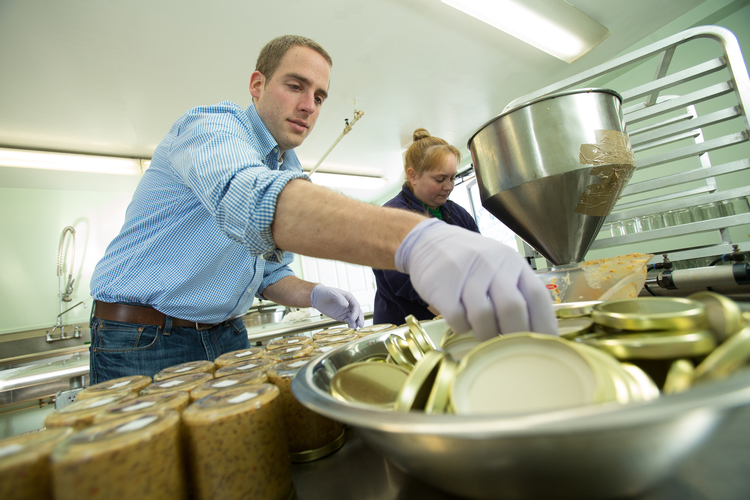
Yes… that’s really me on the production floor bottling mustard.
Even before you’ve launched your product, get your website up. It’ll give Google a chance to see you put something up on the web – and you’ll be able to build an email list of fans who can’t wait for you to launch! And don’t forget to secure those social media profiles (even if you’ve got nothing to put up yet!).
Here are a couple of resources I have used in the past to build quick websites (and they all have ecommerce components)
- Shopify (we use this for Green Mountain Mustard and I LOVE it)
- SquareSpace (incredibly easy to use interface)
- WordPress (you’ll want your own hosting here, but this is wildly popular. The website you’re reading right now is built on WordPress.)
5. Look up health laws, permits, insurance and more
Ok – here’s the first biggie. Seps 1-4 were pretty easy, but important for your company’s branding. Now, it’s time to get down to work and see if you need to apply for any permits before you produce your product. What permits and licenses am I talking about?
- Food Producer’s License (usually you get these through the state health department office.
- Caterer’s License (if you’re preparing and serving food for immediate consumption)
- Scheduled Process (if you produce a product in a jar it should be approved by a process authority. Here’s more on that)
- Business License (want to be a corporation, LLC, partnership? File the paperwork to become a real business with your Secretary of State’s office)
- Product Liability Insurance (basic insurance is $1 million general liability and $2 million general aggregate
- Legal protection – you may want to protect your company name and it’s visual identity – or even a unique tagline.
6. Find packaging for your food product
How are you going to package your product? Do you want to put it in glass jars? Printed pouches? Your scheduled process may mandate how you package your product, so you could be limited. Regardless, here’s a couple resources (and pretty packaging) you can browse to find what you’d like:
And if you need package design inspiration check out The Dieline or even Pinterest.
There are even more packaging resources on this page.
7. Determine your product’s pricing
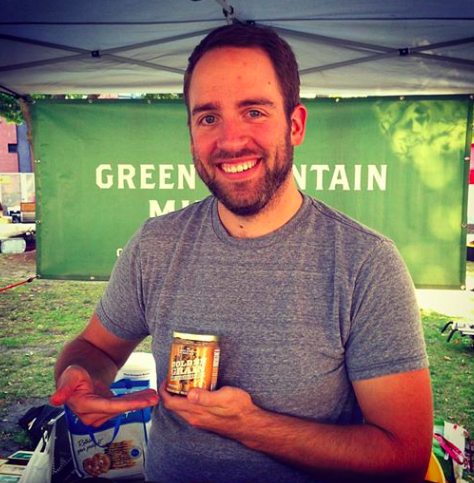
Drumming up sales at the local farmer’s market.
This is the most important step on the entire list — the cost of your product. It determines if you’ll have a viable business. It determines your price on the shelf. And it could literally crush you if you don’t get it right. I created a tool to calculate food or menu costs that you can download here and start to use right away.
Anyway, here’s what’s included in your product cost:
- Ingredients (plus shipping!)
- Packaging
- Labor
If you have your own kitchen, you’ve also got things like rent, utilities, etc. Ultimately, you need to make and sell enough product to leave the lights on, right?
Related Reading: Menu & Recipe Cost Template – Download My Spreadsheet
8. Decide how you’re going to produce your product
There are a lot of ways you could produce your product. For some of you, your home kitchen is perfect. There are many states with cottage food laws that allow you to run a small business out of your kitchen. That means you can produce products in your house for public sale. There are limitations on process, revenue, and how you can sell, but they are fantastic programs to get started.
You could also use a church kitchen, community kitchen, shared kitchen, restaurant kitchen – or if you want you can have someone else make your product. That’s called co-packaging – and I wrote an entire guide on getting started with co-packing.
Ultimately, there’s no right or wrong answer – I’ve produced three food products three different ways. It all depends on where you on with your business.
9. Check out your competitors at the grocery store
This is a covert operation because many large grocery stores – and even specialty stores – discourage photography. But, with a smartphone, you can snap a shot quickly. I have written a lot on test marketing your food product in my book, but here’s three reasons why it’s so important:
- It helps you position your product – are you going to be at the bottom of the market or the most expensive?
- It helps you get an idea of shelf space – how much bbq sauce is on the shelf? Is there room for you?
- It helps you identify local competition – If you make spice blends, your direction competition probably isn’t McCormack – it’s the other guy making spice blends in your town.
10. Read up on how to become the best salesperson
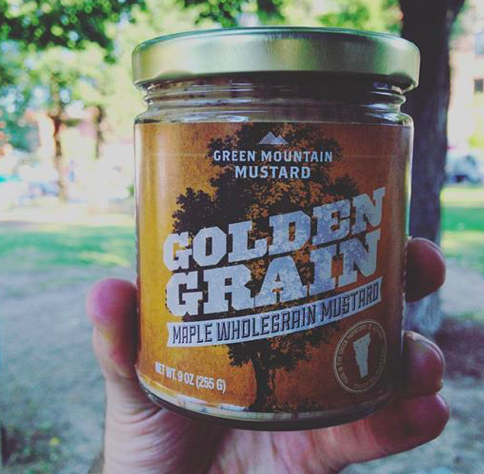
My top selling whole grain mustard.
Your hot fudge sauce isn’t going anywhere unless you can sell it. And a lot of food producers just want to make their product. Not you, though. You’re going to become a sales master. You’re going to get your product into a handful of stores when it first launches, right? YES. I’ve been reading a lot of sales books and blogs to get better at personal selling – whether it’s at a farmer’s market or a new retailer. Here are a few of my favorites:
- Neuromarketing
- Brainfluence
- Spin Selling
- AdWeek Copywriter’s Handbook (for writing sales copy, emails, etc)
- Tony Robbins article
Just one of these books is going to help your sales game. By the way, I don’t get any compensation for recommending these books. These are guides that have help me along the way. You can also check out my book on starting a specialty food business on Amazon titled Food Business Secrets. Read-up!
11. Know what you’re good at – and outsource the rest
This is hard for any business owner: you want to do everything, but that’s simply not possible. That means you have to think about what you love to do. The part of your business that keeps you going through the long nights and weekends.
Do that. And outsource many of the other business functions. I realize when you’re starting out, you don’t have a lot of cash to have other people do things for you. You’ll get there. Heck, I’m not there yet either. But I want to be. It’ll feel amazing once something HUGE is off your plate, won’t it?
12. Make your sell sheet (aka giant billboard)
This is basically the food industry’s version of a billboard. Your sell sheet is a giant business card – beautifully designed, I might add – that tells retail buyers and distributors about your company, your products, and sometimes includes pricing. Here’s a great article I wrote on sell sheets with examples.
Again, if you’re not design-inclined, hire a college student looking to build their portfolio – they’ll love the work! Or, use one of the sites I mentioned above to get your sell sheet designed.
You Might also Like: The Economics of the Fried Chicken Sandwich
13. Make a list of retailers in your area
Where are you going to sell your product? Are you going to sell to retailers in your area? What about farmer’s markets? Are they sustainable to build business? Or, you could go the food service route and sell only in bulk. Finally, take advantage of technology and sell online – lovely margins to be had!
Whatever strategy you choose, it’s time to get listy! Write down a list of stores you’d love to see your product in. Include the big stores (you know, the kind-of-impossible ones?), small specialty stores, bakeries, farmer’s markets, restaurants, etc. Then, use your super-ninja sales skills to get into some retailers.
Bonus: Here’s what to bring to your retail buyer appointments.
14. Find sources for your ingredients
If you don’t get a little bit nerdy with math, specialty foods (aka manufacturing) might not be for you. You’ve got scrutinize every penny that goes into your product cost – and constantly find ways to decrease it. One of those ways is to find better sources of ingredients. In many cases, that means you’ve got to stop buying from grocery stores (maybe).
Here are a couple ideas:
- Food Service Distributors
- Warehouse stores (Costco, BJ’s, etc)
- Online bulk suppliers
- Grocery stores (special order only)
Buying bulk can get pricey for a small food producer, but it pays off with a lower product cost. And lower product cost means a higher margin for you. That really means more money in your pocket. Heck yes.
15. Find a local group of other food producers
There seems to be groups for everything – cat lovers, rock climbers, and knitters. Oh, and there’s tons of groups for small food producers just like you. There are a ton of LinkedIn Groups (just search food business). But, if you’re looking for face-to-face and online interactions, consider becoming a member of the Specialty Food Association. The Vermont one is awesome — great benefits and seasonal meetups where I learn a ton.
Getting together with people who know what it’s like to be in your shoes is a relief. You can all complain about price increases in packaging, getting your product into stores, and putting your head in your hands when you view a profit & loss statement. And don’t forget successes! We’re all in this together. Be excited for you buddy who’s hot sauce company landed it’s first account in NYC. Celebrate each other’s wins!
16. Promote your company to family & friends
Now that you’ve got your “beta” version of your product, it’s time to announce it to the world. You’re going to need the power of the people to get your food company out there – so let’s do some promoting. Post on Facebook, twitter, and other social media channels (you could even pay for promotion if you want).
But, the best promotion is email.
Make sure you have a way to collect emails on your website. Email is gold. It basically prints money when you send one out – especially when you build up that loyal fan base of yours.
For now, send an email to your family and friends, letting them know about your company (and if you’ve landed a few retailers, let them know that, too). Promote it to enough people, and you’ll get a nice bump in website traffic from your family and friends sharing your company with their own circles! Happy promoting!
17. Talk to a store buyer to get the lay of the land
Haven’t approached a buyer quite yet? It isn’t too intimidating – and many of them are willing to help small food producers out.
If you get a quick 10-minute meeting, try to present your product, see where it be merchandised in the store, and get a feel for how distribution to the store works. Tip: do this with a small, local store. You’ve got to get your ducks in a row before you approach the big boys.
18. Design point-of-purchase materials
How are people going to know about your product? Point-of-purchase (POP) materials are a great way to shout from the shelf about your product. And they come in many different flavors.
You can do shelf talkers which extend from the shelf, c-shelf signs which fit into the lip of the shelf, or you could even do a shipper – that’s where the product is shipped in a custom-printed box that gets displayed away from the aisle.
If you’re just starting out, stick with the basic signs. Shippers will set you back a few thousand dollars (and I’m sure your spouse won’t appreciate having a stack of them in the dining room).
19. Land your first sale (take a deep breath!)
It’s game time! Let’s go make some money. You’ve read your sales books, memorized your 30-second food product pitch, and have all your materials ready. You got this.
If you need more help, here’s a great resource in our free food business startup kit.
20. Deliver your product (make sure this is included in your cost)
You got your first sale! Woot Woot!
Now, you’ve got to deliver the purchase order. Time to load up the car, right? Well, not exactly. Explore the different delivery options you have. There’s personal delivery (which is what you’ll likely be doing for the first few months), paid delivery (which is where you pay to have your product delivered via a service), or shipping via USPS, FedEx, UPS.
Whatever delivery method you use, make sure your cost is incorporated into the pricing you’re showing retailers and distributors. For example, if you make $12.00 on a case of product, but it costs you $10 just to drive there and back (plus your time), you’re not making a penny. Get friendly with addition and subtraction to make sure your delivery methods are making you money.
21. Focus on moving product in your first store
A lot of food producers ask me “how do I get into more stores?” Well, that shouldn’t be your focus. Your focus should be on generating more sales at a smaller group of stores.
Then, you can replicate your proven strategy out to 10, 20, 50, or even 100 stores. If you pushed to get your product in 100 stores, then you’re faced with moving that product – and no plan. Get your plan in place by working individually with retailers to move more product.
How do you move more product? You could run a sale, participate in a demo, do events in the area and drive people to the store, promote on social media, put up a shelf-talker. There are tons of ways!
22. Revisit your product cost
More math? Seriously? Yes. I’ve included this on my list because it’s crucial to your success. In the food biz, ingredients, packaging and labor fluctuate. That means your cost goes up or down.
Make sure you’re keeping an eye on it! Review your cost of goods sold with every production. Check ingredient prices, your packaging invoices (with shipping!), and your labor rate (did you pump out the blackberry jam as fast as you did last time?).
Here’s a clear-cut example: I made the mistake of not updating my product cost, so that altered my profit margins and ultimately my income. Not only had a couple of my ingredients gone up in price, put my glass was more expensive, and labor was spread across the board. We’re talking like $0.10/unit. Now, I have better control of it – you should, too. Don’t lie to yourself.
Remember, I built a food product-cost calculator – it’s free.
23. Start selling online
If I could build a food business solely on the internet, I would (and believe me, I’m working towards it!). The internet is a powerful thing – and ripe for systems. As the son of a materials engineer, I’m a sucker for details, precision, and systems. Online sales can be automated – from fulfillment to shipping. And your margins are crazy good.
While I could talk about selling your product online, other people have done it way better. Here are my favorite resources:
Don’t have an online store yet? Shopify is crazy awesome – and has become the go-to resource for many name and small brands over the past 5 years. I’ve been using it for quite a while and my sales have increased dramatically once I got started.
24. Find a team-member – or several
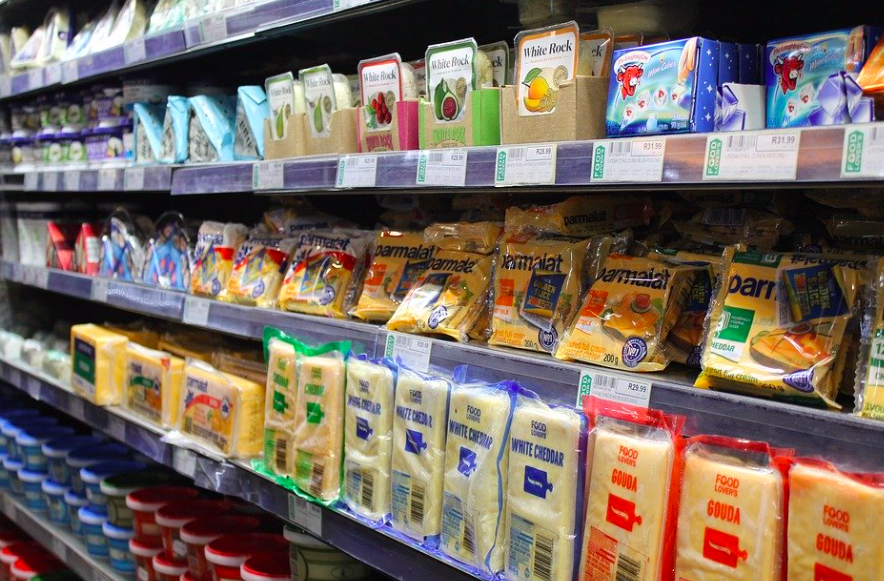
Team work makes the dream work!
It took me almost four years to realize I needed some help. My business was growing and I couldn’t control it. My parents were helping where they can – shipping packages and doing events – but I needed more. I’ve brought on interns from the local college for temporary relief, but it’s time to find a partner – and you should, too.
Starting a business – in any industry – is hard to do alone. (It’s definitely possible, though). Go to local networking events, search LinkedIn and start asking family and friends who they may know.
Partnering up means someone else has skin in the game – it’s not just you. And that leads right into my last step – one of the most important on the list.
25. Take the day off
How many things do you have to do right now – besides the 25 I’m giving you on this page? Probably hundreds – and it all has to get done immediately, right? If you’re like me, you’re immersed in your business all day – with little breaks. What do you do? You take a break. Go for a walk, call a friend, head out to lunch, work-out, play with your kids outside.
Whatever it is – your business does not always have to be at the top of your list. Take a break – a couple days off if you have to. You need to recharge or you might burnout. And burnout is detrimental to launching your food business.
That’s the end of the quick guide!
Tackle as many steps as you’d like at a time – maybe one a night after you get home from your full-time job. Or take the weekend and blow through 10 of them. There’s a good amount of paper work that needs to get done and Sunday mornings are perfect for that!
Just a heads up, too — this isn’t an exhaustive list of what to do, but it gives you a great starting point – and a to-do list – to bring your product to market.
Looking for help getting started?
You can get involved in the community by signing up for our food business startup kit. When you sign up you’ll get immediate access to our newsletter, food business canvas template, and other bonuses we only make available to subscribers.
Don’t forget to have some fun on the start of your food business journey too. Leave a note in the comments below and share the idea you’re working on. Now that you know the 25 steps to take to start your a specialty food business, check out the 25 mistakes you should avoid at all costs based on my own experience.
